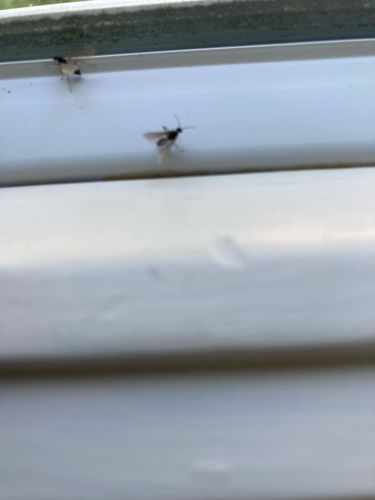Fungus Gnat
Scientific Name: Bradysia spp. (for dark-winged fungus gnats, most commonly encountered indoors), or various genera within Mycetophilidae.
Order & Family: Order: Diptera, Family: Sciaridae (dark-winged fungus gnats) or Mycetophilidae (true fungus gnats)
Size: Typically 2-8 mm (0.08-0.31 inches) long.

Natural Habitat
Often found indoors in homes and greenhouses where houseplants are present, as well as outdoors in moist, shaded areas with decaying leaves, compost piles, and rich soil. They thrive in damp environments where fungi are abundant.
Diet & Feeding
Larvae primarily feed on fungi and decaying organic matter in the soil, but can also consume fine root hairs of plants, especially in high populations. Adult fungus gnats do not feed.
Behavior Patterns
Adult fungus gnats are attracted to light and commonly seen flying in erratic patterns or resting on walls and windows. They do not bite but are a nuisance. Larvae live in moist soil or decaying organic matter and feed on fungi and plant roots. Their entire life cycle, from egg to adult, can be completed in about 3-4 weeks depending on environmental conditions.
Risks & Benefits
Potential Risks: While generally harmless to humans, large populations can be a nuisance indoors. Larvae can damage plants, particularly seedlings and plants with tender roots, by feeding on the root hairs, leading to wilting, yellowing, and stunted growth. Potential Benefits: In outdoor ecosystems, they contribute to decomposition processes by consuming decaying organic matter and fungi.
Identified on: 8/15/2025